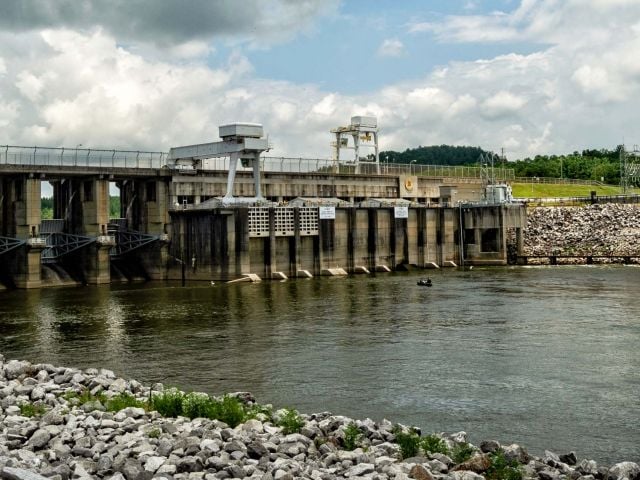Displaying 3001 - 3024 of 7455
Research
Nitrate in U.S. Tap Water May Cause More Than 12,500 Cancers a Year
Nitrate pollution of U.S. drinking water may be responsible for up to 12,594 cases of cancer a year, at a cost of up to $1.5 billion for health care, according to a new peer-reviewed study by the Environmental Working Group

Research
Cover Crops: Reducing Farm Runoff While Saving Soil
In the summer, millions of lush green acres of corn and soybeans blanket the Midwest. Come fall, many harvesters scrape crop fields until they are black and barren, exposing large swaths of vulnerable land to heavy rains, melting snow and powerful winds. Until the following year's planting, soils laden with toxic farm chemicals are left to wash downstream, where they may contaminate sources of

Consumer Guides
EWG’s guide to bug repellents
EWG has updated our guide to bug sprays and repellents to protect your family from bug bites, including those from ticks, mosquitoes and other critters. Use our guide to find the best bug spray and repellent for your family.

EWG is an independent nonprofit organization largely funded by individual donations and grants from charitable foundations.
Research
One-Third of California’s High-Risk Kids Not Tested for Lead Poisoning
Despite federal and state laws requiring blood tests for all young children most at risk for lead poisoning, year after year California falls far short of its responsibility.

Consumer Guides
Where is Triclosan Still Approved for Use?
Triclosan is an antimicrobial chemical that pollutes people and the environment.

Research
‘Retired’ Sensitive Cropland: Here Today, Gone Tomorrow?
The environmental, public health and natural resources problems plaguing American agriculture are daunting and getting worse. Shifting environmentally sensitive land out of row crop production is one the simplest and best ways to mitigate these problems. But unless management and land use changes endure over the long term, the environmental and other gains will prove fleeting.

Research
Is Federal Crop Insurance Policy Leading to Another Dust Bowl?
Is Federal Crop Insurance Policy Leading to Another Dust Bowl?

Research
Exposing Fields of Filth
When high water breaches animal barns, waste lagoons or fields with applied manure, the nearby surface water becomes toxic.

Research
Dangerous Monsanto Chemical Remains in Thousands of Schools
Schools serving up to 14 million students may be contaminated with unsafe concentrations of PCBs leaching from caulks, sealants, and other aging building materials.

Research
Fooling Ourselves
Drinking water, lakes and rivers in Iowa and across the Corn Belt are in serious trouble because of polluted farm runoff. To tackle the problem, for decades we've taken the approach favored by agricultural interests – making federal tax dollars available for conservation practices that curb runoff, encouraging farmers to adopt those practices, then hoping enough of them volunteer to do the right

Research
Cutting the Fat
The cost to taxpayers of providing crop insurance to farmers has more than tripled since 2001, rising from an average of about $3 billion a year in 2001-2003 to more than $10 billion a year in 2012-2014. The increase is largely the result of sharp jumps in the cost of subsidizing both farmers' premiums and the companies that sell crop insurance.

The widespread adoption of genetically engineered (or “GMO”) crops over the past two decades has led to an explosion in the use of toxic weed killers.
Personal care products are largely unregulated. The FDA does not even require safety testing of ingredients in personal care products before they are used.
For Cancer Defense, the Future of Protein is Green
When health experts look back on the diets of current generations, obsession with protein will surely rank high as a mistake. Here's the hard truth: Americans eat more protein than they need –...

Keys to a Healthy Diet
What we eat is directly and intricately linked to our health. Not only can eating right help prevent many of the most burdensome diseases in America today, such as heart disease and diabetes, but it...

Research
The Downfall of Direct Payments
Starting in the 1930s, U.S. farm programs focused on reducing crop surpluses and sending checks to farmers when crop prices fell.
Research
Is Your Bottled Water Worth It?
When you want to know what's in your tap water, look at your local water utility's website. You'll find the source of the water and any chemical pollutants remaining after treatment.

Research
Higher Ethanol Blends May Harm Health and Engines
In March 2009 corn ethanol producers asked for help from the federal government to expand their industry. Growth Energy, a consortium of ethanol producers, petitioned the Environmental Protection Agency (EPA) to allow 50% more ethanol in gasoline than is currently permitted, requesting approval for E15 fuel (a mixture of gasoline with 15% ethanol) (Growth Energy 2009).

Research
Anniston, Alabama
The story of Anniston is a cautionary tale. Monsanto's internal documents, many of which are being posted here for the first time for the world to finally see, uncover a shocking story of corporate deception and dangerous secrets. As The Washington Post revealed [Monsanto Hid Decades of Pollution" (front page, Jan. 1, 2002) and "In Dirt, Water and Hogs, Town Got Its Fill of PCBs" (Jan. 1, 2002).]

Research
On The Hook: Commercial Fishing Reaps Billions
U.S. taxpayers doled out more than $6.4 billion in subsidies to the commercial fishing industry between 1996 and 2004, possibly accelerating the ongoing collapse of fish stocks worldwide and adding to the devastation of large ocean fish species.

Research
Ethanol’s Federal Subsidy Grab Leaves Little For Solar, Wind And Geothermal Energy
As Congress and the incoming Obama administration plan the nation's next major investments in green energy, they need to take a hard, clear-eyed look at Department of Energy data documenting corn-based ethanol's stranglehold on federal renewable energy tax credits and subsidies. Solar, wind and other renewable energy sources have struggled to gain significant market share with modest federal

Research
Shopper's Guide to Compact Fluorescent Light Bulbs
Compact fluorescent light (CFL) bulbs uses 75 percent less energy than its incandescent counterpart, lasts up to 10 times longer than an incandescent bulb. But all CFL bulbs aren't equal. Some have lower mercury content than others, and some last much longer. Unfortunately, you can't tell the best of the best by their labels - or the U.S. government Energy Star logo. Some Energy Star labelled

Research
FDA's Midnight Mischief Heightens Mercury Risk to Pregnant Women, Infants
Fish is loaded with valuable nutrients, including protein, iron, omega-3 fatty acids, which reduce harmful cholesterol, lower blood pressure and prevent blood clots, and selenium, a trace mineral that helps the body prevent cellular damage. But some ocean-dwelling fish also contain high levels of mercury, a powerful neurotoxin that is especially dangerous to the fetus and infants.
